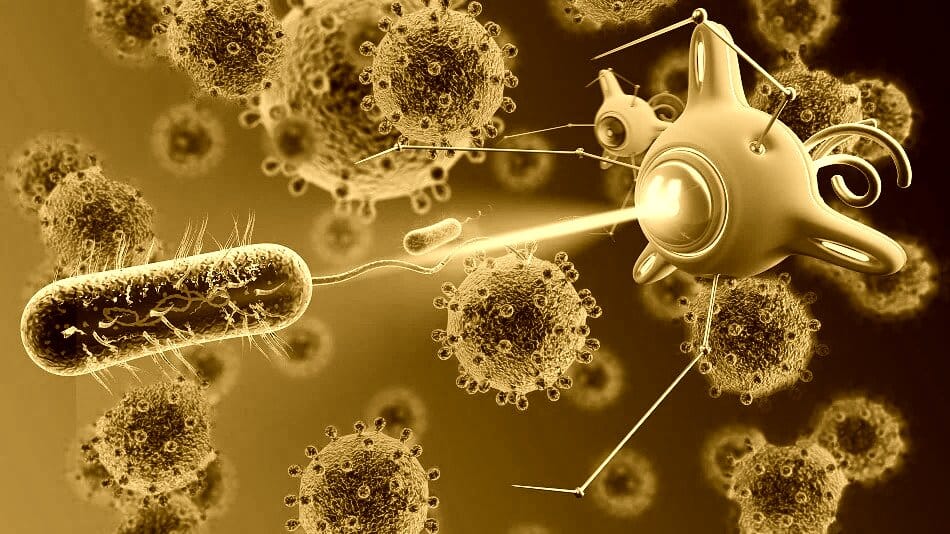The Role of Nanotechnology in Health Sector

Let us try to understand what nanotechnology is. According to one article published on connected app, an upcoming Indian social media platform, the word is formed by combining ‘Nano’ and ‘technology’. Nano means the billionth part of something while technology is the scientific knowledge to do something.
Therefore, nanotechnology in simple language is the technology that takes the smallest part of a matter into account. And it takes place at the molecular or subatomic level. It was Richard Feynman, the American physicist who first thought about nanotechnology.
The idea of nanotechnology emerged from Nanoscience and was first discussed at the California Institute of Technology during a talk organized by the American Physical Society.
It just remained an idea for as long as fifty years.
Scientists and researchers started taking it seriously only in the new millennium when they realized that it can be used in multiple areas like electronics, cosmetics, agriculture, medicine, and the health sector.
For instance, nanotechnology has a significant role in fuel production by using advanced catalysis. It also helps in manufacturing fuel-efficient vehicles through improved combustion and reduced friction.
Health is one of the sectors where technology has played a big role in the last few years. Whether it’s in the diagnosis, treatment, or surgery, modern technology has proved a game-changer.
Why is it Relevant?
A research team has developed nanomicle which will be used in serious ailments like lung cancer, colon, and breast cancer. It will help in the delivery of drugs to the affected tissues. Nanotechnology is the latest technology which deals with matter undergoing changes at the molecular level. It’s made up of multiple nanometers.
Important Elements
Nanomicelles
When amphiphilic molecules combine together to form a spherical structure, you get nanomicelles. The diameter of such a structure is only 5 to 100 nm. There are multiple agents involved behind nanomicelles.
Although they are usually created through surfactant molecules which can be either non-ionic, ionic or cationic detergents. There are certain nanomicelles that can also be grown by mixing lipids with detergents.
Use In Drug Delivery:
They are amphiphilic in nature. The structure has a contrast- the outer shell which is hydrophilic easily dissolves in water while the interior is hydrophobic that doesn’t dissolve in water. This dual property makes them an ideal carrier for delivering drug molecules.
The hydrophilic shell makes the micelles soluble in water that makes intravenous delivery possible. At the same time, the hydrophobic core transports drugs which aids in therapy.
After nanomicelles are injected in the body, it reaches the tumor where blood vessels may be leaking. However, such blood vessels are absent in healthy organs.
Importance of Targeted Delivery
The objective of cancer treatment is to destroy cancer cells without harming healthy cells in the body. Chemotherapy, which is the most popular form of cancer treatment, is highly toxic with various side effects. To cure cancer, effective targeted drug delivery is essential.
Nanotechnology Has Various Applications In The Health Sector
It has following applications in the health sector:
- Nanotech detectors are used for predicting heart attack.
- Nanochips are used for discovering plaque in the arteries.
- Nanocarriers are used during eye surgery, and also for chemotherapy.
- Diabetic pads are used for regulating blood sugar levels.
- Nanoparticles are used for drug delivery for the therapeutic treatment of neurological disorders.
- Nanosponges are types of polymer nanoparticles coated with red blood cell membranes which can be used to absorb toxins and remove them from the bloodstream.
- Nanoflares are used to detect cancer cells in the bloodstream.
- Efficiency of DNA sequencing is increased through nanopores
How Nanotechnology Is Used?
It’s used for making Personal Protection Equipment (PPE) kits, and also for the Nano coating of face masks.
Dangers of Nanotechnology
Since the technology is still in a nascent stage, there are many potential risks and side effects. Regulators like the US Environmental Protection Agency and the European Commission’s Directorate of Health and Consumer Protection have begun to assess the potential risks posed by nanoparticles.
However detailed research is still needed to find out its behaviour after it enters the system. Therefore, before introducing this technology in the market, the behavior of nanoparticles based on their size, shape and surface reactivity needs to be thoroughly analyzed.
Government Initiatives to Promote Nanotechnology in India
Nano Science and Technology Mission- NSTM
It is an umbrella program launched in the year 2007 to promote research and development in the field of nanotechnology. Its stated objectives include promoting research, infrastructure development, developing human resources and facilitating international cooperation.
Nano Science and Technology Initiative- NSTI
It was established in the year 2001 by the Department of Science and Technology (DST) to focus on issues related to the development, research and application programs of nanomaterials including drugs, drug delivery, gene targeting and DNA chips.
Nanotechnology will increasingly play a more important role in the health sector. It has been proved beyond doubt that it helps in drug delivery to the targeted areas. For a successful treatment, it is essential to provide drugs at the targeted area. In the absence of such a technology, it was not easy to treat patients of breast and lung cancer.
At present, the leading private hospitals are equipped with nanotechnology, and it is frequently used to treat complicated cases. However, in a country like India, the majority of the population cannot afford treatment at these expensive hospitals.
Therefore, to ensure that this latest technology is available for the masses, the government too needs to offer this at their hospitals. It is easier said than done.
Unless the benefits of modern technology don’t reach the poor people of a county, the very purpose of such high-tech treatment is lost. Moreover, it is the poorest section of a country that is mostly affected by serious diseases like cancers, heart ailments.
That is why it is more important than the benefits should first reach them before they reach the affluent class. In fact, rich people have already been availing such advanced modes of treatment in countries such as the US, UK, France, and Australia. It’s the poor people of our country who need it more than anyone.
FinanceBuzz is an online media platform for finance and economy news, with a focus on keeping the community up-to-date with the latest happenings in the field. From business to policy, from economy to technology, we cover it all.








